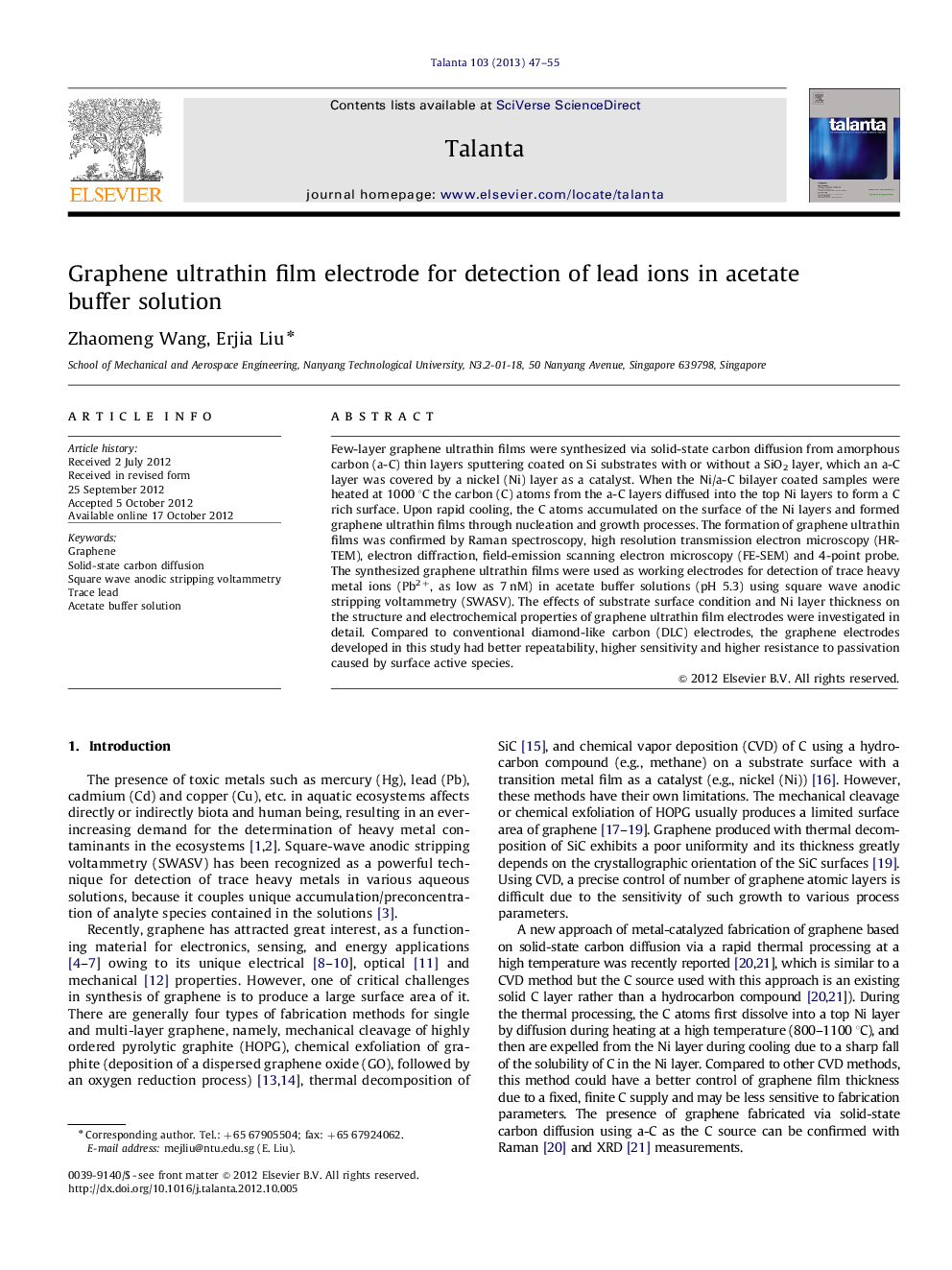| Article ID | Journal | Published Year | Pages | File Type |
|---|---|---|---|---|
| 1242899 | Talanta | 2013 | 9 Pages |
Few-layer graphene ultrathin films were synthesized via solid-state carbon diffusion from amorphous carbon (a-C) thin layers sputtering coated on Si substrates with or without a SiO2 layer, which an a-C layer was covered by a nickel (Ni) layer as a catalyst. When the Ni/a-C bilayer coated samples were heated at 1000 °C the carbon (C) atoms from the a-C layers diffused into the top Ni layers to form a C rich surface. Upon rapid cooling, the C atoms accumulated on the surface of the Ni layers and formed graphene ultrathin films through nucleation and growth processes. The formation of graphene ultrathin films was confirmed by Raman spectroscopy, high resolution transmission electron microscopy (HR-TEM), electron diffraction, field-emission scanning electron microscopy (FE-SEM) and 4-point probe. The synthesized graphene ultrathin films were used as working electrodes for detection of trace heavy metal ions (Pb2+, as low as 7 nM) in acetate buffer solutions (pH 5.3) using square wave anodic stripping voltammetry (SWASV). The effects of substrate surface condition and Ni layer thickness on the structure and electrochemical properties of graphene ultrathin film electrodes were investigated in detail. Compared to conventional diamond-like carbon (DLC) electrodes, the graphene electrodes developed in this study had better repeatability, higher sensitivity and higher resistance to passivation caused by surface active species.
► A new approach of graphene fabrication by metal-catalyzed carbon solid diffusion. ► Si substrate type and Ni layer thickness effects on electroanalysis. ► High resistance to passivation, ultra-low detection limit by an UPD method.
